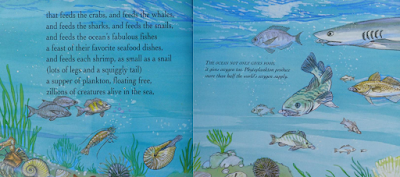The Empanadas that Abuela Made is a children's book by Diane Gonzales Bertrand, with art by Alex Pardo DeLange, published in 2003. It is available at the Internet Archive, and it is a bilingual book: Las empanadas que hacía la abuela.
Here is a YouTube read-along (the reading is just in English), and here is a Spanish YouTube reading:
The story starts with the empanadas, and then the ingredients: the pumpkin, the dough that folds over the pumpkin, the rolling pin that rolls out the dough, etc. It is told cumulatively with short lines in both English and Spanish (no rhyming in either language). Then the grandchildren who push the rolling pin, and the grandfather who hugs them, the dog who follows grandfather, the cousins who chase the dog, then the family who comes with the cousins, and finally the grandmother who feeds everybody with empanadas, and milk to drink, with happy faces all around. It ends with "This is Abuela who dreams of happy faces..."
Plus there is a recipe in the back for pumpkin empanadas. Yum! The recipe is given in both English and Spanish.
This is a beautiful book, and a perfect model for a simple chain story based on food and family.






